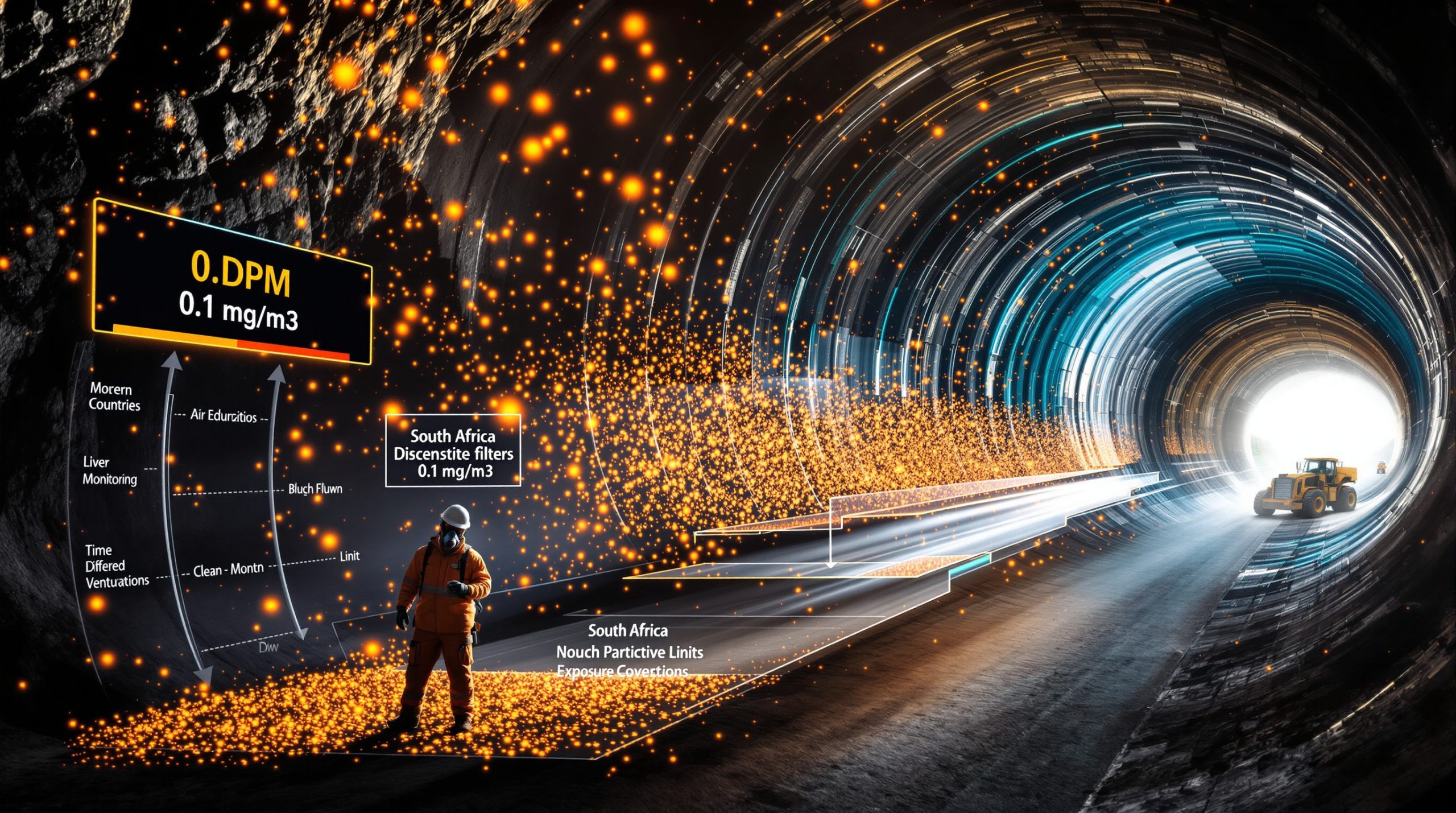Argentina's Mining Revolution: How RIGI is Reshaping Investment Opportunities
Argentina's Large Investment Incentive Regime (RIGI) represents a transformative opportunity for mining companies eager to develop the country's vast mineral resources. This pioneering program is attracting attention from major industry players, particularly in the copper and lithium sectors, as companies position themselves to capitalize on what could become South America's most competitive mining jurisdiction.
What Is Argentina's Large Investment Incentive Regime (RIGI)?
Key Features of the RIGI Program
Launched in October 2024, Argentina's Large Investment Incentive Regime stands as a bold initiative to revitalize the nation's mining sector despite ongoing economic challenges. The program establishes clear parameters for participation:
- Minimum investment threshold of $200 million to qualify for benefits
- Application window extending through July 2026, with a potential one-year extension to June 2027
- Significant tax incentives for qualifying investments to improve project economics
- Access to international dispute resolution courts, providing critical legal protections
- Focus on strategic resources including copper and lithium, essential for global energy transition
The RIGI framework represents Argentina's most ambitious attempt to date to create investment certainty in a historically volatile economic environment.
Economic Context Behind the Initiative
Argentina implemented RIGI against a backdrop of complex economic challenges that have historically deterred major mining investments:
"Argentina's mining potential has always been extraordinary, but economic instability has kept many investors at bay. RIGI aims to change that equation fundamentally."
The country's persistent struggles with inflation and currency devaluation have traditionally complicated long-term capital investments. RIGI addresses these concerns by:
- Creating fiscal stability mechanisms that shield qualifying projects from sudden tax changes
- Establishing legal frameworks that transcend domestic political cycles
- Providing international recourse options that reduce sovereign risk concerns
- Setting clear parameters that allow companies to model project economics with greater confidence
These protections arrive at a critical moment for Argentina's resource development strategy, particularly as neighboring Chile implements higher mining royalties and Peru grapples with social and political disruptions to mining operations.
Which Mining Companies Are Pursuing RIGI Benefits?
BHP and Lundin's Vicuna Copper Project
The Vicuna copper project represents one of the most significant potential beneficiaries of the RIGI program and a major vote of confidence in Argentina's mining framework. This collaboration between mining giants BHP and Lundin to apply for Argentina's new investment incentives has already signaled clear intentions:
- Jose Morea, Vicuna project lead, announced plans at the Argentina Copper 2025 conference to "apply for RIGI benefits in the near term"
- The project's scale easily exceeds the $200 million minimum investment threshold
- Technical studies and pre-development work are advancing to position the project for formal application
- The deposit's scale and grade position it as potentially one of South America's most significant copper developments
The participation of BHP—one of the world's largest mining companies—in seeking RIGI benefits sends a powerful signal about the program's credibility and potential effectiveness.
Other Mining Projects Seeking RIGI Status
Several mining projects are at various stages of pursuing RIGI benefits:
- Two lithium projects have successfully received RIGI certification, becoming the first beneficiaries of the program
- McEwen Mining's Los Azules has formally submitted an application, representing the first copper project to seek qualification
- Aldebaran Resources' Altar project faces timeline challenges with its preliminary economic assessment due in September 2025
- Multiple early-stage copper and Argentina Lithium Opportunities exploration projects are accelerating development work to meet application deadlines
The success rate of early applications will likely determine whether additional companies rush to qualify before the window closes. Projects that have already secured financing or have advanced technical studies have distinct advantages in the application process.
What Challenges Do Mining Companies Face With RIGI Applications?
Timeline Constraints for Early-Stage Projects
The current RIGI application window creates significant challenges for projects still in exploration or early development phases:
- Application deadline pressure: Even with the potential extension to June 2027, companies must rapidly advance technical studies
- Resource definition requirements: Preliminary resource estimates must be established to determine project scale and economics
- Investment planning hurdles: Companies must commit to significant capital expenditures with incomplete project information
- Accelerated development timelines: Normal project development schedules may need compression to meet qualification deadlines
Javier Roberto, head of Aldebaran Resources' Altar project in Argentina, has "expressed concerns over the closing window for RIGI, even with a potential extension to June 2027," highlighting the pressure early-stage projects face in attempting to qualify.
Regulatory Uncertainty and Environmental Considerations
Beyond RIGI qualification timelines, mining companies confront additional regulatory complexities that could impact project viability:
- Glacier preservation law ambiguities: High-altitude projects face uncertainty regarding permissible development activities near glacial zones
- Provincial vs. federal jurisdictions: Companies must navigate overlapping regulatory frameworks with potential conflicts
- Environmental baseline requirements: Comprehensive studies must be completed before final investment decisions
- Water usage considerations: In arid regions, securing water rights adds another layer of complexity
Industry executives have vocally advocated for clearer guidelines on permissible activities near glaciers and more streamlined permitting processes. The interpretation of environmental regulations remains a significant risk factor for investment decisions, even with RIGI incentives in place.
How Does RIGI Fit Into Global Mining Investment Trends?
Strategic Importance of Copper Development
Argentina's RIGI program emerges at a critical juncture in the global copper market:
- Supply deficit forecasts: Industry analysts project a potential 8-10 million tonne annual copper deficit by 2035
- Grade decline reality: Average copper grades at existing mines have fallen from ~0.8% to ~0.5% over the past decade
- Development pipeline gap: Few large-scale copper projects have advanced to construction phase globally
- Capital allocation competition: Mining companies must prioritize jurisdictions offering both resource potential and investment certainty
The timing of RIGI aligns with increased urgency around copper supply development, as electrification trends and renewable energy infrastructure drive surging copper demand while traditional mining jurisdictions struggle with permitting challenges and resource nationalism.
Comparison With Other Mining Jurisdictions
Argentina's new incentive structure creates a distinct competitive position relative to other major mining regions:
| Country | Advantages | Challenges |
|---|---|---|
| Argentina (with RIGI) | Tax incentives, legal protections, resource potential | Historical economic volatility, logistics challenges |
| Chile | Established infrastructure, mining expertise | Rising royalties, water scarcity, mature assets |
| Peru | Significant resources, existing operations | Social license issues, political uncertainty |
| Australia | Stability, infrastructure | Higher labor costs, mature exploration landscape |
| Canada | Political stability, capital markets access | Lengthy permitting, northern logistics challenges |
This comparative advantage could potentially position Argentina to capture a greater share of mining investment capital, particularly if early RIGI applications demonstrate consistent implementation and benefits delivery.
What Are the Broader Implications for Argentina's Mining Sector?
Economic Impact Potential
Successful implementation of RIGI could deliver substantial economic benefits across multiple dimensions:
- Foreign direct investment: Potential to attract $10-15 billion in mining capital over the next decade
- Employment creation: Each major mining project typically generates 2,000-3,000 construction jobs and 800-1,200 operational positions
- Export revenue growth: A single world-class copper mine can generate $1-2 billion in annual export revenue
- Supply chain development: Local services and manufacturing expand to support mining operations
- Infrastructure improvements: Power, water, and transportation investments benefit broader communities
These economic benefits extend far beyond the direct mining operations, creating development opportunities in traditionally underserved regions and diversifying Argentina's economic base beyond agricultural exports.
Investor Sentiment and Market Response
The market is closely monitoring RIGI implementation for signs of effectiveness and consistency:
- Early applications from major companies like BHP and Lundin to apply for Argentina's new investment incentives signal preliminary confidence
- Mining equity analysts have begun incorporating RIGI benefits into valuation models for Argentine projects
- Capital markets remain cautious but increasingly attentive to Argentine mining opportunities
- Successful implementation could potentially trigger a significant rerating of Argentine mining assets
"The key for investors will be seeing not just the approval of RIGI applications, but the consistent application of benefits over multiple years and potentially across different administrations."
Political stability remains a fundamental consideration for long-term capital commitment, with investors seeking evidence that RIGI protections will withstand future political transitions.
How Should Mining Companies Approach RIGI Opportunities?
Strategic Considerations for Project Developers
Companies evaluating Argentina's mining potential under RIGI should consider several strategic approaches:
- Accelerate technical programs to meet application deadlines
- Phase development plans to reach the $200 million threshold efficiently
- Evaluate joint ventures to share risk and accelerate timelines
- Engage early with authorities to clarify application requirements
- Develop robust ESG frameworks to address environmental and social considerations
The most effective strategies will balance the urgency of meeting application deadlines with thorough technical and economic assessment to ensure project viability beyond the incentive period.
Best Practices for RIGI Applications
Based on early applicant experiences, successful RIGI applications typically incorporate:
- Detailed investment schedules with clear capital deployment timelines
- Economic impact analyses quantifying benefits to local and national economies
- Comprehensive environmental management plans addressing key regulatory concerns
- Community development initiatives demonstrating long-term social value creation
- Technical feasibility documentation validating project economics and development plans
Companies should approach the application process with thoroughness and transparency, recognizing that the quality of initial applications will likely influence how subsequent submissions are evaluated.
Argentina's Mining Future: Balancing Opportunity and Execution
Argentina's RIGI program represents a pivotal moment for the country's mining sector, offering a potential pathway to unlock its vast mineral resources. The success of this initiative ultimately depends on consistent implementation, regulatory clarity, and continued political support through changing administrations.
For mining companies, RIGI presents both immediate opportunities and strategic challenges. Those able to navigate the application requirements and timeline constraints stand to gain significant competitive advantages in developing world-class resources, particularly in copper and lithium—metals essential to global energy transition.
"Argentina has always had the geology. What's been missing is the investment framework. RIGI attempts to solve that equation, but execution will determine whether it truly transforms the country's mining sector."
The coming months will prove critical as major companies finalize RIGI applications and initial projects advance under the new incentive structure. For global mining investors, Argentina has presented a compelling proposition—one that could potentially reshape the competitive landscape of South American resource development for decades to come. Furthermore, these developments are creating numerous investment opportunities 2025 as the mining industry evolution continues, with some countries like Australia also implementing lithium tax innovations to remain competitive.
FAQs About Argentina's Mining Investment Incentives
What is the minimum investment required to qualify for RIGI benefits?
Companies must commit to investments of at least $200 million to qualify for Argentina's Large Investment Incentive Regime.
How long will the RIGI application window remain open?
The current application window extends through July 2026, with the possibility of a one-year extension to June 2027.
Which mining projects have already received RIGI benefits?
To date, two lithium projects have successfully received RIGI benefits, while McEwen Mining's Los Azules copper project has submitted an application.
How does Argentina's glacier law affect mining projects?
The glacier preservation law creates regulatory uncertainty for high-altitude mining projects, with industry leaders calling for clearer guidelines on permissible activities near glacial areas.
What tax advantages does RIGI offer to qualifying mining companies?
RIGI provides tax breaks and fiscal stability for qualifying investments, along with access to international dispute resolution mechanisms to protect investor interests.
Are You Investing in Resource Companies with Major Discovery Potential?
Don't miss out on being first to know about significant ASX mineral discoveries. Discovery Alert's proprietary Discovery IQ model delivers real-time alerts on potential market-moving announcements, giving you a crucial edge. Explore how historic discoveries have generated substantial returns by visiting the Discovery Alert discoveries page.




